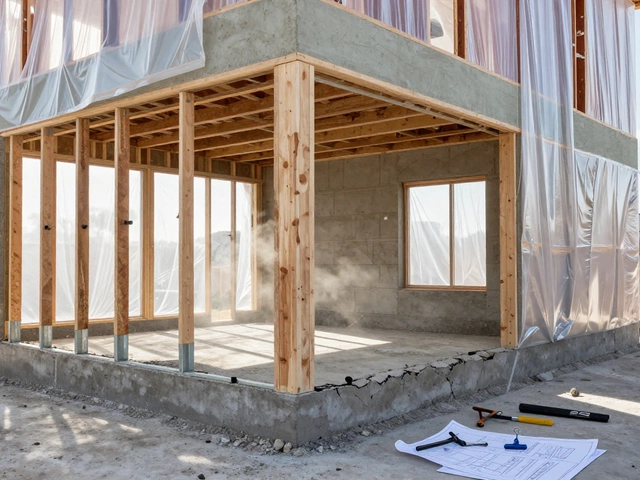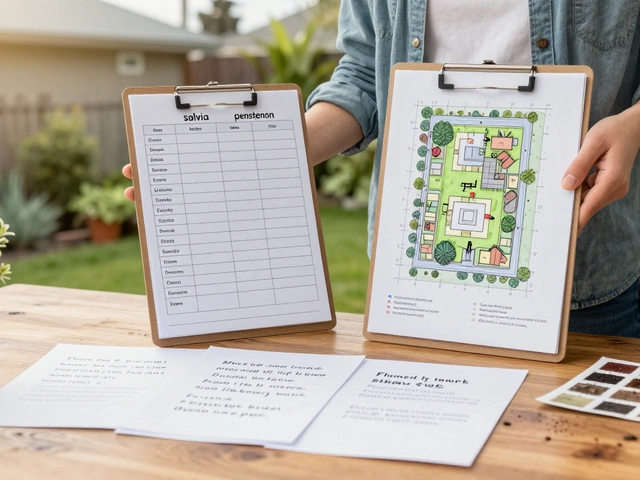Think haggling is your secret weapon every time you buy a new couch or table? Not always. There are moments in the furniture world where pushing for a lower price just won’t work—and could even cost you the deal.
Some stores set prices with almost zero wiggle room. Big chains (think IKEA or West Elm) often put everything on the tag and never budge. Their staff literally can't bargain with you, no matter how persuasive you are. If a price is marked as final—especially in outlets or during huge clearance events—chances are, you’ll just hear a “no” if you ask for more off.
Ever spot a limited-time offer or a doorbuster deal? Here’s the trick: those promos are already chopped as low as the store is willing to go. Insisting on a better price can be awkward and won’t get you further. Some stores might even see it as disrespectful when their sale is rock-bottom.
- Why You Might Want to Hold Back on Haggling
- Store Policies That Make Haggling Pointless
- How Discounts and Promotions Change the Game
- When It’s Okay to Step Away Without Negotiating
Why You Might Want to Hold Back on Haggling
Not every furniture shop works like a flea market. There are times when trying to haggle can make things awkward, waste your time, or actually hurt your chances of scoring a good deal. Some modern furniture sale stores have pricing rules set in stone, and staff have zero flexibility to knock off even a few extra bucks. If you keep pushing, you might just get a friendly-but-firm "sorry, can't do it."
High-profile furniture retailers, especially big brands, use software to keep their prices steady, so there’s no room for secret discounts. When stores advertise that prices are non-negotiable or "final sale," take them at their word. You’re just not going to get them to bend, no matter how much you ask.
- Staff at major chains usually don’t have the authority to haggle. Their price tags are set by corporate, not the store manager.
- In large outlet-style stores, items can be discounted up to 70%. That’s pretty much rock-bottom, and any attempt to bargain more might be seen as pushy.
- Certain showrooms follow a one-price-for-all policy so everyone feels treated fairly. If they advertise this, haggling just isn’t part of the experience.
There's another side, too. Stats from a 2023 home retail survey showed that 68% of buyers who tried to haggle in big furniture chains walked away empty-handed. These stores are openly not set up for haggling. So, if your goal is to take a piece home today, save your energy for a store where bargaining is actually on the table.
Store Policies That Make Haggling Pointless
If you've ever tried to haggle at a furniture sale in a big chain store, you know how fast it hits a dead end. Stores like IKEA, Crate & Barrel, and Ashley Furniture stick to set policies where the sticker price is literally the bottom line. Haggling just isn’t built into their business model.
Most retail associates simply don’t have the authority to change prices. Their registers lock them into pre-set numbers, and even talking to the manager usually leads nowhere. The logic is simple: stores want to keep pricing fair and predictable for everyone. They’d rather avoid awkward back-and-forth and just say upfront, "Here’s the price — that’s it."
- IKEA’s policy: Prices are non-negotiable in all its stores worldwide, unless you’re buying from the ‘As-Is’ section where discounts are already set.
- Pottery Barn: All discounts are pre-decided. The staff can’t hand out extra deals just because you ask. Seasonal promos are the only exception, and even those have strict limits.
- Target and Walmart: Their furniture pricing works the same way. Markdowns are rare and always automatic.
Even at outlet stores, where you’d think a little negotiation might work, policies are usually clear cut. Outlets offer a certain discount upfront—sometimes up to 60%—and don’t budge on it. If you try to negotiate, they’ll likely point to a sign saying “All Sales Final” or “No Negotiation.”
| Store | Negotiation Policy |
|---|---|
| IKEA | Non-negotiable prices, except pre-set As-Is discounts |
| Crate & Barrel | Set prices, no negotiation allowed |
| Ashley Furniture | Outlet discounts only, bargaining not possible |
Smaller local shops might play by different rules, but for big-name stores or outlets, the best strategy is to focus on official promos rather than wasting energy on a lost cause. Knowing these store policies keeps your shopping smooth and painless.

How Discounts and Promotions Change the Game
When it comes to furniture sale season, discounts and promotions are everywhere—especially during Black Friday, Labor Day, and end-of-year clearances. But here’s the thing: once you see those red tags or hear the phrase “doorbuster deal,” know that the price is often already at its rock bottom. Stores use promo pricing to draw crowds, counting on volume to make up for lower profit per item, so there’s no extra room for negotiation.
Major chains like Ashley Furniture or IKEA design their discounts to be non-negotiable. The sale price you spot in-person or online usually means “take it or leave it.” Even independent shops tend to freeze prices during big promotions—mainly because the deals are aggressively advertised in advance, so every customer expects the same bargain.
| Store Type | Chance to Haggle During Promotions | Typical Discount (Percent) |
|---|---|---|
| National Chains (IKEA, West Elm) | Near zero | 15-50% |
| Local Independent Stores | Low | 10-40% |
| Outlet Locations | Almost none | 20-70% |
Sometimes, stores are even more rigid with promotional items. For example, floor models or last-chance clearance pieces are advertised as “final sale,” which really means no more price drops. Trying to haggle here won’t work—and can just irritate the staff.
Here’s a practical tip: don’t spend precious time negotiating during big sale events. Focus on checking condition, delivery, and warranty instead, since those are much more likely to be improved than the price itself. Stick to haggling on full-priced couches or tables if you really want to work a deal—it’s where you have the most wiggle room.
When It’s Okay to Step Away Without Negotiating
There’s a point where haggling just isn’t worth it. If you notice the price is truly the lowest you’ve seen—maybe matching what’s advertised online or in big box stores—it might be time to walk away and accept the deal. Furniture sale tags at those prices are hard to beat, especially for brand-name pieces where the company sets the lowest rate dealers can sell at (that’s called MAP—Minimum Advertised Price). Stores risk losing their license to sell a brand if they go below these prices, which means you’re not going to talk them down, no matter how smooth your pitch is.
Stock is another signal. If a hot new sofa just dropped and there’s a waitlist, you’re not in the driver’s seat. When supply is low and demand is sky-high, forget trying to negotiate. Some statistics show that during new product launches or supply shortages, furniture sale discounts basically disappear. In 2023, popular U.S. furniture chains ran less than 5% negotiable offers on in-demand items compared to more than 20% on slow-movers or floor models.
Sometimes, what’s more valuable is your time and energy. If you’ve done a price comparison and can’t find a clear edge, or the salesperson has already explained store policy on pricing, don’t press just for the sake of it. You could lose the item to someone willing to pay list price—especially if you’re hitting up a big sale day or a clearance event.
- If the price matches top online retailers or is a storewide promotion, skip the haggle.
- If an item is tagged as “final sale,” that’s almost always it—no extra deals to be had.
- When you sense the staff is genuinely unable to adjust (like at an outlet or warehouse), move on. There’s no hidden discount coming.
- And if someone else is interested in the same piece, stalling to nitpick over $10 could mean you lose it entirely.
Recognizing these signs takes the stress out of shopping and keeps your furniture sale trips quick—and way less awkward.








